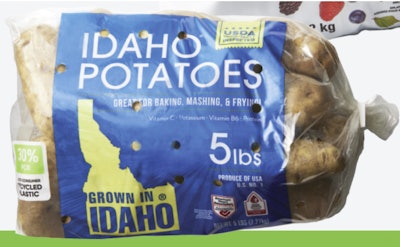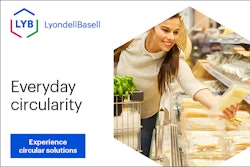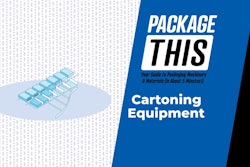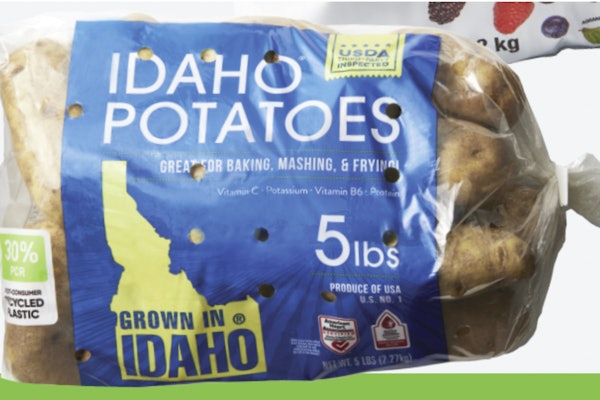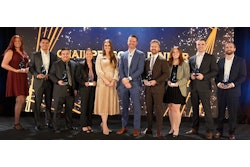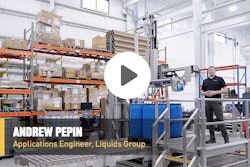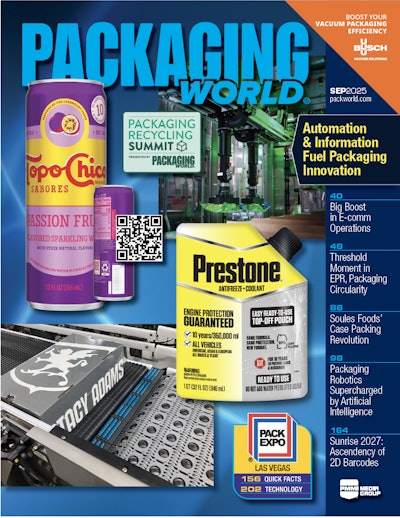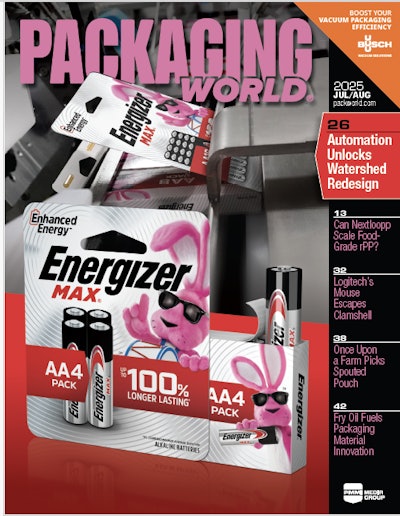Walmart has partnered with grower brand Wada Farms and suppliers Idaho Package (IPAK), and Emerald Packaging to introduce what the companies say is the first 30 percent post-consumer recycled (PCR) food-contact bag in the retail potato market.
The project was developed in response to Walmart’s Project Gigaton, an initiative to reduce or avoid one billion metric tons of greenhouse-gas emissions from its global supply chain by 2030.
“At Walmart, we are committed to reducing our environmental impact and offering our customers more sustainable choices,” says Laura Himes, VP of produce sourcing, Walmart. “We are proud to collaborate with Emerald Packaging, Idaho Package, and Wada Farms to introduce the first 30% Post-Consumer Recycled (PCR) bag for the potato category. This initiative directly supports our goal to minimize waste with the integration of PCR content for retail packaging and demonstrates our dedication to working with suppliers who share our commitment to a more sustainable future.”
Idaho Package and Wada Farms began trialing the PCR potato bags in mid-2024 and launched the product with Walmart later that year. Today, a dozen Wada SKUs use PCR resin, reducing virgin polyethylene by more than 100,000 lb., as of June 2025.
Retail-driven sustainability goals
For Wada Farms, the initiative began with both retailer collaboration and an internal goal to close the loop on packaging waste.
“There are a multitude of reasons. A need to reduce plastic waste and support from the Walmart team led us to make this work,” says Eric Beck, director of marketing at the grower. “EPR is still up in the air, but the potential ‘off ramp’ to excessive fees is a factor to using PCR. We feel good about limiting the plastic waste going to landfills and reusing that waste to deliver product to market economically and with food safety, shelf life, and quality of product as targets.”
Walmart and Wada also share ambitious sustainability goals.
“Both companies are committed to working to reduce plastic waste. Gigaton gives us the ability to quantify our efforts that help meet the set criteria.”
Machineable film achieves perfect parity to virgin PE
Beck described the switch from traditional polyethylene film to PCR as operationally seamless.
“You can go from traditional poly to PCR with no adjustments," he says, noting that film appearance was slightly different in bulk but otherwise indistinguishable in performance.
“Bags together appear ‘cloudier,’ but in each bag alone [which is what the consumer experiences], it is hard to tell a difference in clarity. There is no noticeable difference of print quality or color brightness from virgin PE.”
On-pack messaging and market response
The company chose to communicate the sustainability story directly on the packaging.
“There is a logo declaring 30 percent PCR content conspicuously on the face and back of the bag," Beck says. "We want people to know we are diverting 5 lb of landfill waste for every 1,000 bags used.”
The format is still a little too new on the market to have garnered much by way of consumer feedback at this point.
“... but from a retailer perspective, there have been accolades for meeting sustainability milestones they are pushing vendors to hit. Most large retailers have a focus on sustainability initiatives as part of their long-range planning to reduce their carbon-footprint impact. The PCR helps take a big leap towards hitting those milestones," Beck says. "As the momentum for a sustainable supply chain remains a priority for most retailers, the demand for PCR will continue to increase. Wada remains committed to help our retail partners push for a sustainable, carbon-neutral landscape for future generations.”
He adds that the company views the project as part of its broader responsibility to improve plastic circularity.
“We feel it is very important to do our part to find a solution to plastic waste. Plastics are a beautiful thing for delivery and food safety. We must create a true recycle stream to lessen our landfill usage.”
Also of note, this isn't Wada's first rodeo with sustainable film solutions.
The new film follows an earlier experiment with biopolymer packaging that, “never worked properly from a film standpoint and the price point was higher than using PCR,” Beck says.
Supplier collaboration and scale-up
Emerald led the material’s development and extrusion.
“We’ve worked on sustainable packaging initiatives for over 20 years, and PCR has emerged as the first affordable option ever,” said Kevin Kelly, CEO, Emerald Packaging. “We built a supply chain and launched a product that met or exceeded the PCR targets of major retailers. We did so without compromising product performance and a nominal cost impact. Our commitment to PCR aligned perfectly with Walmart’s goal to incorporate it in their packaging.”
Kelly credited collaboration among all three companies for helping bring the product to market efficiently.
“The three companies are moving the plastics industry in the right direction.”
